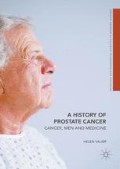Abstract
The revival of microscopy, the development of cell theory, and the emergence of specialization all drastically reshaped medicine during the latter nineteenth century, but so too did the development of another phenomenon I have not yet discussed: the science of physiology. Once again the great medical centres of Europe—London, Paris, Berlin—were at the epicentre of profound transformations in the professional, practical, and intellectual development of medicine and surgery, and nowhere was this more apparent than in the Paris laboratories of Claude Bernard. Bernard’s classic Introduction à la Médecine Expérimentale (An Introduction to the Study of Experimental Medicine) was published at the peak of his career in 1865, by which time the Emperor himself, Napoleon III, had promised him a new laboratory suite at the Muséum National d’Histoire Naturelle in Paris. Bernard was an aggressive and ambitious experimenter, freed from the necessity of supporting himself through the practise of medicine thanks to the financial support of his wife, Marie Françoise Martin, and the professional support of an early mentor at the Hôtel-Dieu, the physician and physiologist, François Magendie, who provided Bernard with early access to laboratory equipment. A strict empiricist, Bernard proposed what would become the classic experimental model in science: determination of cause and effect not through correlation but through the control and manipulation of variables. If variables could be altered independently of each other, and reliably caused an observable effect to occur then, and only then, he reasoned, could a causal relationship be established. For Bernard, observation of the sick patient at the bedside, even when supplemented by newer tools, like the stethoscope, limited the science of medicine to a descriptive practice. Similarly, the lesions and diseased organs for so long the focus of attention by morbid anatomists represented the endpoints and not the dynamic process of disease itself. In place of such ‘passivity’ then, he proposed a continuation of Magendie’s interventionist, animal-based (vivisection), approach to the investigation of normal and abnormal physiological function under the most strictly controlled laboratory conditions. In his preface to Médecine Expérimentale, Bernard was clear about the relative benefits of these methods of investigation:
Access this chapter
Tax calculation will be finalised at checkout
Purchases are for personal use only
Author information
Authors and Affiliations
Copyright information
© 2016 The Author(s)
About this chapter
Cite this chapter
Valier, H.K. (2016). Sex, Hormones, and Quantification. In: A History of Prostate Cancer. Medicine and Biomedical Sciences in Modern History. Palgrave Macmillan, London. https://doi.org/10.1057/978-1-137-56595-2_4
Download citation
DOI: https://doi.org/10.1057/978-1-137-56595-2_4
Published:
Publisher Name: Palgrave Macmillan, London
Print ISBN: 978-1-4039-8803-4
Online ISBN: 978-1-137-56595-2
eBook Packages: HistoryHistory (R0)

